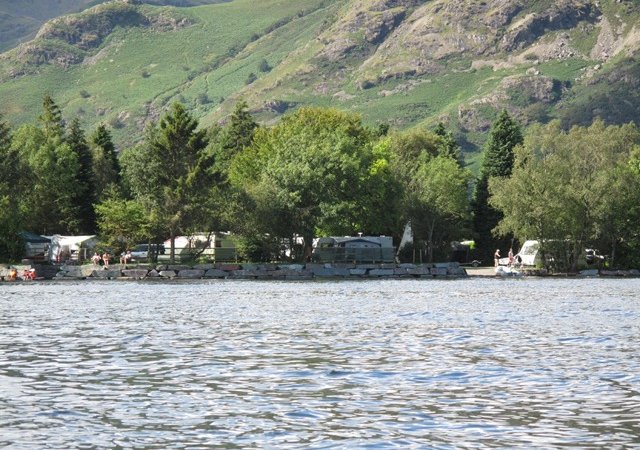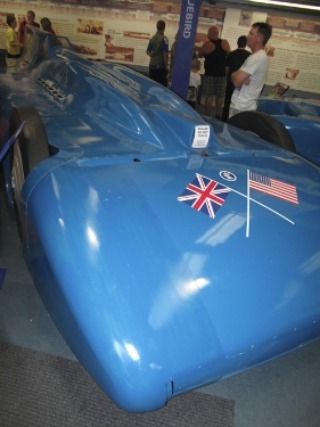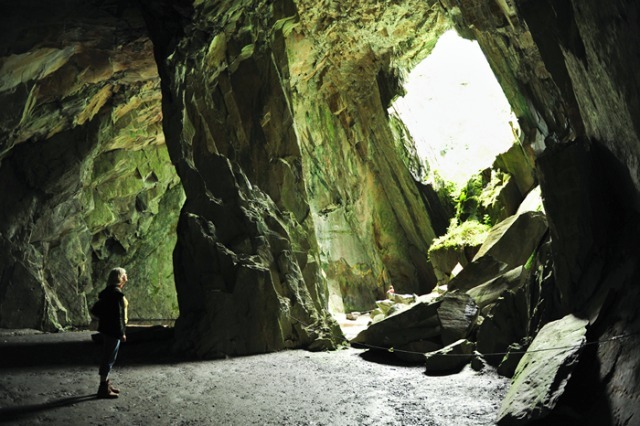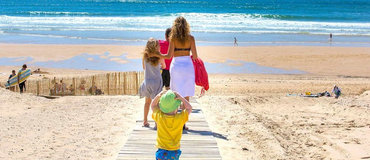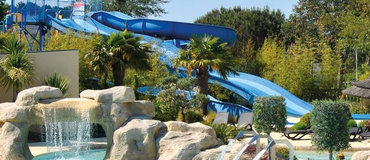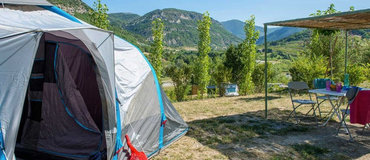
Claudia Dowell finds its perfect for a simple Lake District adventure. Coniston Water is said to be the setting for Arthur Ransom's Swallows and Amazons.
SWALLOWS, AMAZONS AND BLUEBIRDS
Blink, and the children have grown up and leading lives of their own, so when there’s a chance to all get together in one of the most beautiful parts of the country, it should not be passed up. My sister and her husband were heading for their usual spot in Little Langdale, in the Lake District; did I want to join them, my nephews and their friends? I certainly did. I adore my nephews but I also like my privacy, so decided I would take my own accommodation.
I wanted to do some walking, nothing too strenuous mind, and get out on a lake, with someone else doing the rowing. I had also been listening to Arthur Ransome’s Swallows and Amazons, on Radio 4Extra: Coniston Water is said to be the location for the story, so it might be fun to spot a few landmarks. And, as is well known, Coniston is where Donald Campbell’s ill-fated attempt at a new speed record took place, and it would be fascinating to find out more.
There are several campsites in the area but I chose Skelwith Fold to be closer to the family at Little Langdale – not somewhere you would want to take a caravan, the road is steep and narrow. I had rung Skelwith Fold and checked the route on Google maps so my journey there went smoothly. I was the advance party and had two of the chaps, Ben and Andreas, joining me for dinner. I popped into Ambleside for supplies and a quick look at the shops full of wet-weather gear – pretty much essential kit for any stay in the Lakes.
MONK CONISTON HALL
Hurrah, the sales were on, and with help from my knowledgeable assistants I bought a waterproof jacket and trousers. There’s quite a science to it, you know, and so much choice. I was now properly kitted out for a circular walk proposed by Ben that would take us from the Coniston Boating Centre to Tarn Hows and back via Brantwood, the home of Victorian artist, poet and critic John Ruskin, on the other side of the lake. With Ben in charge of the map, we set off.
A circular walk begins at Monk Coniston car park,
taking in Tarn Hows and Brantwood. Photo by Ben Procter
The walk takes you away from the lake across pastureland to the road, which we followed around to Monk Coniston car park at the top of the lake. Here we left the road and walked uphill, passing curious sheep, towards Monk Coniston Hall. En route we passed a folly, which gardeners will enjoy because there’s lots of information about how the Victorian landscapers created the pleasure grounds around the hall. The route takes you through the veg garden and past the house now used as a hotel. From here the walk climbs up through woods where the occasional break in the trees reveal some wonderful views. The sun was still a little shy but we had worked up a steam, so waterproof jackets were now tied around waists and we were grateful for the crystal clear stream feeding a waterfall and stopped for a drink.
TARN HOWS AND BRANTWOOD
Diverging paths meant a lot of map studying but eventually we reached a car park and, more importantly, an ice-cream van, and the tarn. This is a lovely spot for a picnic: with the fells as a backdrop, the views are stunning. You can walk around the tarn but I was pooped after all that uphill walking (note to self – must get fitter).
We walked part way round and then found a road that took us away from the tarn, past the Swallows and Amazons tearooms, or Holly Howe as it is in the book, to Brantwood. At Brantwood there is a tearoom where, because it is high up, you get a great view across the lake.
To get to the jetty for a ride back to the other side of the lake you pass through Brantwood’s lower gardens. I had really enjoyed the walk, all seven miles of it, but I must admit the boat ride across Coniston was my favourite bit, where I got to sit down and just admire the view. It was back to the van for me while the boys went off to greet the rest of the family.
ON CONISTON WATER
Five of us took to the water again but this time under our own steam. Ben and Andreas were in charge of the oars, brother-in-law Tony sat in the prow, and sister Trudie and I sat at the bow, looking ridiculous with handbags on our laps trying to keep them out of water that was seeping through tiny holes in the boat. We had a leak! Suddenly, Coniston Water seemed terribly wide as the boys rowed out towards its middle. They are not evenly matched in size so there were a lot of instructions from Trudie and me about which direction we should be heading and who should be resting their oar and who should work harder to avoid other boats on the lake. Tony thought he could probably row better on his own and stood up to take over. “Sit down,” we women shouted. In the middle of the lake with the boat sitting low in the black water we were not having any swapping of oarsmen. All in all it was hilarious, with Ben soaking his father with deliberate poor rowing action.
Swapping oarsmen in the middle of Coniston Water was not on. Photo by Claudia Dowell
We crossed the lake twice, passing a little boat with reddy-brown sails that could have been the Swallow from the children’s book, before heading to the top end of the lake to land at Monk Coniston car park. With the boat secured, we walked up to the hall for tea on the terrace until the black clouds rolled in and we scurried inside. The boat needed baling out from the rain as well as the leak before we could climb back on board. On the journey back to base we spotted the Gondola, a replica of the famous Victorian steam-powered pleasure boat, steaming gracefully past a caravan site right on the water’s edge and near the boating centre.
PIER COTTAGE CARAVAN SITE
Pier Cottage caravan site is a find. Because it is small and they cannot take passing trade there is no sign on the road to indicate it is there. But the lucky few who were pitched there looked very relaxed sitting outside their vans enjoying marvellous views across the lake. They also have terrific views of the Gondola because this is where it’s moored when not in use.
Pier Cottage has quite a history because it is here that Donald Campbell stored and launched Bluebird K7 for that fatal attempt at the speed record and from where his funeral cortege left to stop at significant spots on the lake before making its way to the church. Mother-and-daughter team Janet and Fay run the site. The cottage, or boathouse, itself is now available to rent, so those who want to holiday with non-caravanning friends can all enjoy the same idyllic spot.
RUSKIN MUSEUM AND LAKELAND MOTOR MUSEUM
A mooch around Coniston unearthed the Ruskin Museum, a fascinating little place that chronicles the history of copper and slate mining, lace and farming in the area. A bronze statue of Donald Campbell greets you at the entrance to its Bluebird Wing, which houses technical drawings and engines of the crafts and videos of the record attempts, plus the Bluebird K7.
There’s more about the Campbells’ (Malcolm and Donald) record-breaking attempts at the Campbell Bluebird Exhibition in the Lakeland Motor Museum at the southern tip of Windermere. Here, you can get close to replicas of the incredible futuristic-looking vehicles used by father and son and find out more about what drove their ambitions. The rest of the museum warrants a couple of hours of anyone’s time. As well as cars, motorbikes and cycles, there is a lovely old caravan with a wooden interior to look over. Both places make a great activity for a rainy day.
LITTLE LANGDALE AND SLATER'S BRIDGE
Over at Little Langdale, nephews Alex and Charlie had been showing their friends the cave that is part of the quarry above the house. I wanted to see it, too, so we put the very large family dog, Zeus, on a lead to make a circular walk that would take us across Slater’s Bridge and up to the slate quarry behind.
The bridge earned its name from the slate miners who used it to cross the River Brathay to get to the quarry. It’s a lovely spot and the water the bridge spans is shallow here so it’s a great opportunity for walkers to get their socks off and paddle. It was a challenge getting Zeus over the style, too, but we managed and carried on to Cathedral quarry.
CATHEDRAL QUARRY
A pillar of slate supports the roof of the main chamber of the quarry, which is lit from above. You can see why it’s called the Cathedral Quarry. It’s spectacular and the wet slate is iridescent with colour. Private individuals enter the 40-foot high cave at their own risk: the floor is wet and it is dark but if you’re sensible it is fine. There is a small pond in there, which has fish in it! Where did they come from?
Our walk continued round to the ford just down the road from their rented house and finished, as all good walks should, at the pub, the Three Shires Inn, which sounds like something out of The Hobbit, and where Zeus helped Trudie with her lunch. A barbecue at the house finished off the day, with all of us huddled around the fire to keep warm with the fells of Little Langdale behind us. The night sky was an intense black and dotted with stars as I gingerly made my way back to the caravan, driving along the narrow, winding roads through unseen spectacular landscape.
It had been great catching up with the family and even better because we had been able to enjoy such a beautiful place together. And it hardly rained at all.
Walk the walk: Tarn Hows
Why walk here? A circular walk in low-level mountains with terrific views and a boat ride at the end. Distance 7 miles Look out for The gazebo folly and veg garden at Monk Coniston Hall, picnic spots and great views across the Tarn, Swallows and Amazons tearooms.
When to go
The Lake District is said to be the dampest area in England with October being the wettest month. You’ll most likely need wet weather gear whenever you go but March to June tend to be the driest months and July the warmest.
Food and drink
We had coffee and delicious cake at the Giggling Goose, North Road, Ambleside. It’s in an old mill and has a lovely garden to sit in. Open seven days a week in the summer months.
About 1.5 miles from Skelwith Fold is the Drunken Duck Inn at Barngates. Food and beer is said to be excellent. Steak, kidney and ale pie will set you back £14.
Three Shires Inn at Little Langdale serves good pub fare and there is a nice garden overlooking the fells.
Lunch at the Swallows and Amazons café will set you back about £9.
Find out more and visit Go Lakes
Campsites and caravan parks in the Cumbria
